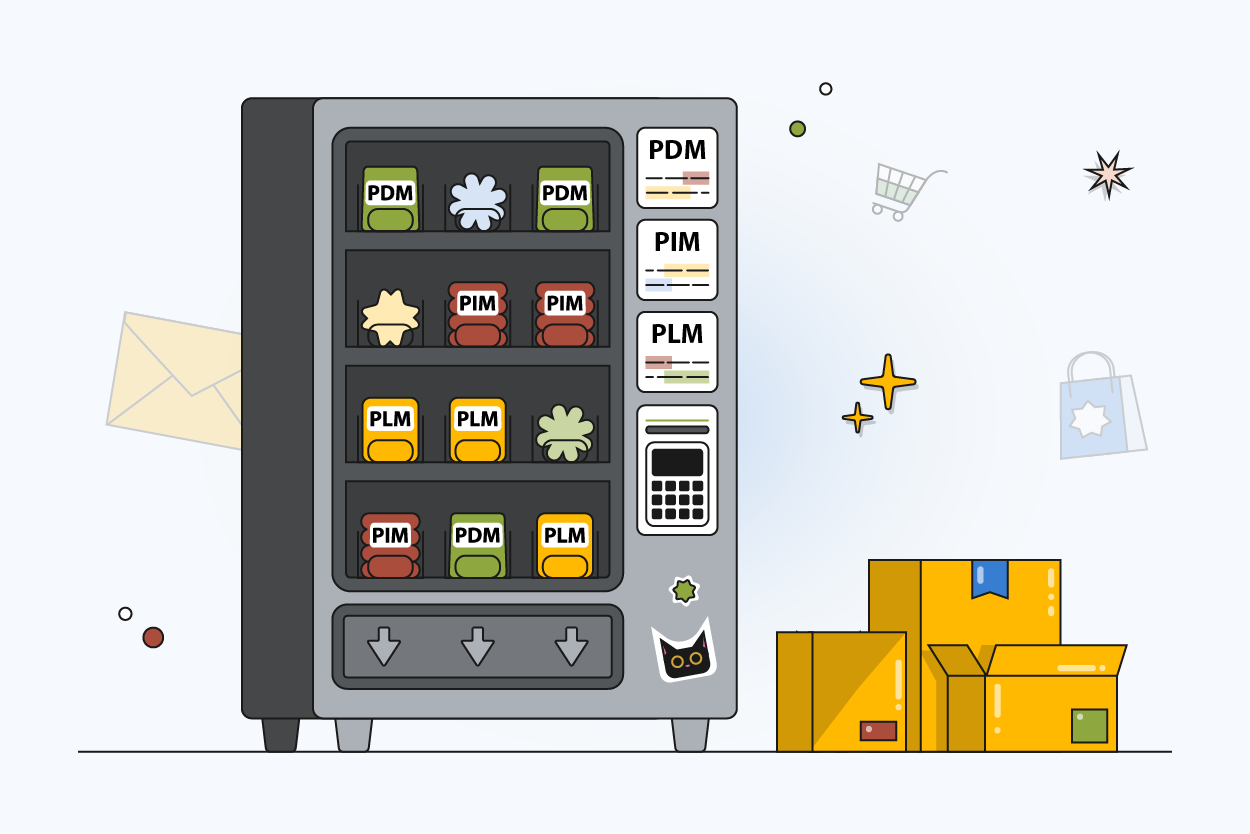What is a SKU? A Comprehensive Guide for Retail Success
Author name: Mark Chickering

Warehouse. 2 A.M. Customer wants a red hoodie, medium size. You're digging through boxes like an archaeologist hunting treasure. Every retailer knows this nightmare. SKU numbers end it.
Twenty years in retail taught me this: SKUs separate winners from losers. Master them, master your business. Whether you run a boutique Shopify store or manage multi-channel inventory, understanding what is a sku transforms operations from reactive chaos to strategic control.
SKUs aren't just codes — they're your competitive edge waiting to be unlocked.
What is a SKU Number?
A SKU (Stock Keeping Unit) gives every product a unique identity. This alphanumeric code lets retailers identify, track, and manage each item instantly. Unlike social security numbers that just identify, SKUs work. They organize, accelerate decisions, prevent chaos.
What does sku stand for exactly? Stock Keeping Unit. But the acronym undersells the power. SKUs are business intelligence disguised as simple codes. These 8-12 character strings pack crucial product data into digestible formats that humans and systems understand equally well.
Here's the power: you create SKUs. No external rules, no bureaucracy. Pure business logic tailored to your needs. While UPC codes follow universal standards, your SKUs follow your rules, solve your problems, fit your workflow.
Many successful retailers manage their SKU data using Product Information Management (PIM) systems to centralize product information alongside inventory codes, creating a single source of truth for all product-related data.
The Anatomy of a SKU Number
Well-built SKUs aren't random. Every character encodes product data by priority: most important information first. A sku number meaning extends beyond identification—it's compressed business intelligence.
Consider this example: "SHO-RUN-BLK-10"
- SHO: Shoes category
- RUN: Running style
- BLK: Black color
- 10: Size 10
The result: chaos becomes clarity. Guessing becomes precision. Inventory management becomes science. Your warehouse team spots products instantly. Your purchasing manager identifies trends quickly. Your customer service team resolves issues faster.
Where to Find SKU Numbers
SKU numbers live everywhere in your retail ecosystem. Once you know where to look, you'll spot them constantly.
Internal Systems: Your Digital Command Center
Inventory management software houses your SKU headquarters. Whether you use enterprise PIM systems or spreadsheet solutions, SKUs live here. Modern retail platforms automatically generate and display SKUs alongside product information, creating instant accessibility for quick reference and analysis.
Product Labels and Packaging
Physical products wear SKUs on labels, tags, and packaging. Unlike barcodes requiring scanning equipment, SKUs are human-readable. Your team identifies items instantly during receiving, picking, or customer service interactions without technology dependencies.
E-commerce Platforms and Marketplaces
Online marketplaces like Amazon, eBay, and your website display SKUs in product listings, order confirmations, and seller dashboards. This visibility helps you and customers track specific items throughout the purchase journey while maintaining operational transparency.
Point-of-Sale Systems
Modern POS systems integrate SKU functionality seamlessly. Square's retail experts explain that cashiers locate products quickly, check inventory levels instantly, and process returns efficiently. The integration between SKUs and sales systems creates smoother operational flow and reduced transaction times.
How to Create SKU Numbers for Products
Creating effective SKUs balances science and strategy. After implementing hundreds of SKU systems, I've developed approaches that scale with business growth while maintaining operational simplicity.The Foundation: Establishing Your SKU Architecture
Map your product hierarchy before generating codes. Consider these essential elements:
- Category Classification: Start broad, narrow down. Clothing begins with "APP" (apparel), electronics with "ELE," home goods with "HOM." Top-level categorization creates immediate visual organization and intuitive navigation for your team.
- Brand or Manufacturer: Multiple brands require abbreviated names. "NIK" for Nike, "ADS" for Adidas, "HPN" for house brand. This becomes invaluable when analyzing brand performance or managing supplier relationships across diverse product lines.
- Product Attributes: Size, color, material, style variations deserve dedicated segments. Prioritize attributes that matter most to your operations. If color drives sales, make it prominent. If size creates fulfillment challenges, emphasize size coding for operational efficiency.
The Mathematical Approach: SKU Formatting Rules
Consistency builds your SKU system's backbone. According to Investopedia, establish formatting rules and follow them religiously:
- Length Consistency: Maintain uniform character counts within segments
- Character Types: Choose all caps, mixed case, or lowercase — never mix
- Separators: Pick hyphens, underscores, or no separators — then never deviate
- Reserved Characters: Avoid confusing characters (0 vs O, 1 vs I)
Real-world example from a successful apparel client:
- TEE-SUP-BLU-LRG-001
Breaking down this sku example:
- TEE: T-shirt category
- SUP: Supreme quality level
- BLU: Blue color
- LRG: Large size
- 001: Variant number for different styles
Scalability Considerations
Your SKU system should accommodate future growth. Plan for expansion by reserving code segments for new categories, brands, and attributes. Three-character brand codes allow 17,576 combinations—more brands than most businesses ever carry, but better to have room than hit limits during rapid expansion.
Master Product Attributes for Better SKU Management
Creating effective SKUs starts with understanding your product attributes. Learn the best practices for organizing product data in B2B eCommerce.
How to Use SKUs Effectively
Creating SKUs starts the journey—strategic utilization separates retail rookies from seasoned professionals. Transform simple codes into powerful business tools through intelligent application.
Inventory Tracking Revolution
SKUs transform inventory management from reactive to proactive. Instead of discovering stockouts during peak sales, monitor specific item levels in real-time. This granular visibility enables smarter reordering decisions, reducing both overstock and understock situations while optimizing cash flow.
Advanced retailers use SKU data to identify seasonal patterns, predict demand fluctuations, and optimize storage layouts. When SKU "HOO-FLE-GRY-MED" consistently outsells other colors, increase gray hoodie orders while reducing slower variants. Data drives decisions, not gut feelings.
PIMinto's analytics capabilities help businesses track SKU performance across multiple channels, providing insights that drive smarter inventory decisions and improved profitability.Sales Performance Analytics
Each SKU becomes a data point in your business intelligence system. Analyze SKU-level sales data to identify star performers, slow movers, and seasonal trends. This insight drives marketing campaigns, product development decisions, and inventory investments with surgical precision.
One client discovered their top-performing SKUs shared common attributes—premium materials and specific size ranges. This insight guided their entire product strategy, resulting in 34% increased gross margins within eight months.
Customer Service Excellence
Customer calls about questions, returns, or complaints become easier with SKUs. Representatives access product details, stock levels, and order history using just the SKU number. This efficiency translates to shorter call times, higher customer satisfaction scores, and reduced operational costs.
Best Practices for SKU Management
Effective sku management requires discipline, foresight, and continuous refinement. ShipBob's logistics experts emphasize that these practices help businesses avoid common pitfalls while maximizing SKU system benefits.
Documentation and Training
Create comprehensive SKU documentation explaining your coding system, formatting rules, and exceptions. This becomes invaluable when training employees or auditing existing practices. Include examples, edge cases, and decision trees for unusual products.
Your SKU system strength equals your people's understanding. Invest in proper training to ensure consistent implementation across all touchpoints and prevent system degradation over time.
Regular Audits and Cleanup
SKU systems develop inconsistencies during growth periods or staff changes. Schedule quarterly audits to identify and correct:
- Duplicate SKUs for identical products
- Inconsistent formatting
- Orphaned SKUs (codes without products)
- Missing attribute segments
Preventive maintenance costs less than corrective overhauls.
Integration with Business Systems
Modern businesses rely on multiple software platforms—e-commerce sites, accounting systems, CRM tools, marketing platforms. Ensure SKUs integrate seamlessly across all systems to maintain data consistency and operational efficiency without manual intervention.
Implement automated synchronization between systems to prevent manual entry errors and reduce administrative overhead while maintaining data integrity.
Retired SKU Management
Products reach end-of-life, but their SKUs shouldn't disappear entirely. Maintain retired SKU records for historical analysis, warranty support, and customer service purposes. Create clear processes for archiving discontinued items while preventing accidental reuse of retired codes.
SKUs vs. Other Retail Codes: Understanding the Differences
Retail uses multiple numerical codes. Understanding their distinct purposes prevents confusion and improves operational efficiency.
SKU vs. UPC (Universal Product Code)
Both identify products, but purposes diverge significantly. UPCs are universal standards assigned by GS1, identical across all retailers carrying the same product. SKUs are internal codes specific to your business needs and operational requirements.
UPCs are products' global passports—recognized everywhere. SKUs are internal employee badges—meaningful only within your organization. Single UPCs might correspond to multiple SKUs if you track the same product across different locations or sales channels.
SKU vs. Barcode Systems
Barcodes are visual representations of data that can encode various information types, including SKUs, UPCs, or custom data. Many businesses print barcodes containing SKU numbers, creating scannable labels for warehouse operations and inventory management.
Barcodes are delivery methods, SKUs are the information being delivered. You can have SKUs without barcodes (typed or written), but barcodes containing SKUs offer significant efficiency advantages in high-volume operations.
SKU vs. Serial Numbers
Serial numbers identify individual product units, SKUs identify product types. Selling 100 identical red t-shirts means they share the same SKU but have 100 unique serial numbers. This distinction becomes crucial for warranty tracking, returns processing, and inventory accuracy.
High-value items often require both SKUs and serial numbers—SKUs for inventory management and serial numbers for individual item tracking throughout the product lifecycle.
SKU vs. Model Numbers
Manufacturer model numbers identify product designs or specifications, SKUs organize products for retail operations. Single manufacturer models might generate multiple SKUs if you track different colors, sizes, or packaging variations separately.
iPhone 15 Pro is a model number, but your SKUs might differentiate between colors, storage capacities, and carrier variations for precise inventory control and sales analysis.
Advanced SKU Strategies for Different Business Models
Your business model influences optimal SKU strategy. Different retail approaches leverage SKUs for maximum advantage through specialized implementation techniques.
E-commerce Optimization
Online retailers face unique SKU management challenges. Product variations multiply rapidly—consider one t-shirt available in 5 colors, 6 sizes, and 3 materials. That's 90 potential SKUs for one basic product requiring careful organization and management.
Successful e-commerce businesses implement hierarchical SKU structures supporting detailed inventory tracking and simplified customer experience. Create master SKUs for product families and variant SKUs for specific configurations to balance operational needs with customer clarity.
Omnichannel Retail Complexity
Managing inventory across multiple sales channels — physical stores, online platforms, third-party marketplaces — requires sophisticated SKU strategies. Some businesses maintain separate SKUs for each channel, others use unified coding systems with channel-specific prefixes or suffixes.
Maintain accurate inventory visibility across all channels while preventing overselling and stockouts through integrated SKU management and real-time synchronization.
Scale Your SKU Management Across All Sales Channels
Managing SKUs across multiple channels is complex. Discover how multichannel retailing strategies and PIM systems work together for seamless inventory control.
Subscription and Recurring Revenue Models
Subscription businesses often deal with time-based product variations. Monthly subscription boxes might require date-coded SKUs, software subscriptions need license-type differentiation. Incorporate time periods, subscription levels, or renewal cycles into your SKU structure for accurate tracking and billing.
Private Label and Manufacturing
Businesses producing their own products have complete SKU flexibility but face additional complexity. Consider incorporating production batch information, quality grades, or cost variations into your coding system. This enables detailed profitability analysis and quality control tracking throughout the manufacturing process.
SKU Technology and Automation
Modern technology transforms SKU management from manual processes to automated systems. Contemporary tools enhance SKU operations through intelligent automation and integration capabilities.
Number Generators and Automation Tools
Manual SKU creation becomes impractical as product catalogs expand. Number generator tools create consistent, rule-based SKUs automatically, reducing human error and ensuring formatting consistency across large product databases.
Advanced systems integrate with product information management (PIM) platforms, automatically generating SKUs based on product attributes and predefined rules. This automation scales effortlessly as catalogs grow while maintaining system integrity.
Integration with Inventory Management Systems
Modern inventory systems treat SKUs as central organizing principles. Real-time stock level monitoring, automated reordering, and predictive analytics all rely on accurate SKU data. Choose systems supporting your SKU complexity while providing intuitive user interfaces for daily operations.
Artificial Intelligence and Machine Learning
AI-powered systems analyze SKU performance patterns, predict demand fluctuations, and suggest optimal inventory levels. Machine learning algorithms identify correlations between SKU attributes and sales performance, informing future product development decisions with data-driven insights.
Advanced systems suggest SKU modifications based on operational efficiency analysis, recommending consolidation of slow-moving variants or expansion of high-performing categories for improved profitability.
Centralize SKU Data with Professional PIM Solutions
Automated SKU generation and management require the right tools. Explore how PIM systems transform product data management for growing retailers.
Common SKU Mistakes and How to Avoid Them
Learning from others' mistakes accelerates SKU mastery. Here are the most common pitfalls and strategies to avoid them.
The Overcomplification Trap
Enthusiastic retailers sometimes create overly complex SKU systems, encoding excessive detail into codes. While comprehensive data seems valuable, complexity creates user adoption challenges and increases error rates significantly.
Focus on attributes directly impacting business operations. If color doesn't influence purchasing or stocking decisions, consider simplifying color coding or eliminating it entirely from your SKU structure.
Inconsistent Implementation
Inconsistency kills SKU system effectiveness. Mixed formatting, arbitrary exceptions, and evolving rules create confusion and operational inefficiency that compounds over time.
Document standards thoroughly and enforce consistently. Regular audits catch inconsistencies before they become systemic problems requiring expensive corrections.
Inadequate Scalability Planning
Many businesses design SKU systems around current needs, creating limitations as they grow. Character limits, category restrictions, and inflexible structures become barriers to expansion when businesses scale rapidly.
Plan for 10x growth when designing your system. Reserve extra characters, plan for new categories, and build flexibility into your structure for future expansion needs.
Poor Documentation and Training
Brilliant SKU systems fail without proper documentation and training. Team members create workarounds, exceptions multiply, and system integrity deteriorates over time without proper guidance and standards enforcement.
Invest in comprehensive documentation and regular training. Make SKU standards part of new employee onboarding and refresher training programs to maintain system integrity.
Future-Proofing Your SKU Strategy
Retail continues evolving rapidly. Your SKU strategy should adapt accordingly to emerging trends and prepare for future challenges in an increasingly complex marketplace.
Omnichannel Integration Complexity
As businesses expand across multiple channels, SKU management becomes increasingly complex. Unified commerce platforms require sophisticated SKU strategies supporting inventory visibility, channel-specific pricing, and unified customer experiences across all touchpoints.
Future-ready businesses invest in flexible SKU architectures that accommodate channel expansion without requiring complete system overhauls or operational disruptions.
Sustainability and Ethical Sourcing
Growing consumer awareness around sustainability creates new SKU requirements. Businesses increasingly track environmental impact, ethical sourcing, and carbon footprint data at the SKU level for transparency and competitive advantage.
Consider incorporating sustainability indicators into your SKU structure, enabling detailed environmental reporting and conscious consumer decision-making while meeting regulatory requirements.
Personalization and Mass Customization
Emerging technologies enable mass customization, creating unique products for individual customers. This trend challenges traditional SKU approaches, requiring flexible systems that handle one-off variations efficiently without compromising operational integrity.
Progressive businesses experiment with dynamic SKU generation, creating unique codes for customized products while maintaining system integrity and operational efficiency.
Create SKU Numbers for Your Store: Getting Started
Ready to implement a world-class SKU system? Here's your step-by-step action plan based on proven methodologies from successful implementations across diverse retail sectors.
Phase 1: Assessment and Planning
Begin by auditing your current situation. Catalog existing products, identify critical attributes, and map your business processes. This foundation work prevents costly mistakes and ensures your SKU system aligns with operational needs and strategic goals.
Create a cross-functional team including representatives from inventory, sales, customer service, and IT. Their diverse perspectives ensure your SKU system serves all stakeholders effectively while avoiding departmental blind spots.
Phase 2: System Design
Design your SKU architecture using proven principles. Create detailed documentation including formatting rules, attribute priorities, and exception handling procedures. Test your proposed system with representative product samples to ensure codes are intuitive, consistent, and scalable.
Validate your approach with stakeholders before full implementation to identify potential issues and refine processes for optimal adoption and performance.
Phase 3: Implementation and Training
Roll out your SKU system gradually, starting with new products or specific categories. This phased approach allows you to refine processes and address challenges before full implementation while minimizing operational disruption.
Invest heavily in training during this phase. User adoption determines system success, so ensure everyone understands both the mechanics and benefits of your new approach through comprehensive education programs.
Phase 4: Optimization and Refinement
Monitor system performance closely during early implementation. Collect feedback from users, analyze error rates, and identify improvement opportunities through data analysis and stakeholder input.
Be prepared to make adjustments — even well-designed systems require fine-tuning based on real-world usage patterns and evolving business needs.
For businesses ready to scale their SKU management professionally, explore PIMinto's pricing plans that provide enterprise-grade features while maintaining the flexibility essential for growing businesses.
Your SKU Success Blueprint
After two decades of SKU implementations, transformations, and optimizations, these insights consistently separate successful businesses from struggling ones:
- Start Simple, Scale Smart: Begin with basic SKU structures capturing essential information, then add complexity as your business grows. Overly complex initial systems often collapse under their own weight and user resistance.
- Consistency Trumps Perfection: A consistently applied imperfect system outperforms an inconsistently applied perfect system every time. Focus on adherence before optimization to build solid foundations.
- Documentation Drives Success: Your SKU system knowledge shouldn't live in one person's head. Comprehensive documentation ensures continuity and enables effective training while preventing knowledge loss during staff transitions.
- Technology Amplifies Strategy: Modern tools can automate SKU generation, ensure consistency, and provide powerful analytics. But technology without strategy creates expensive chaos and operational confusion.
- Regular Maintenance Prevents Major Problems: Like any system, SKUs require ongoing maintenance. Regular audits, cleanup processes, and continuous improvement prevent small issues from becoming major headaches requiring expensive fixes.
SKUs aren't just inventory codes—they're the foundation of organized, efficient retail operations. Master them, and you'll transform your business from reactive to proactive, from chaotic to streamlined, from surviving to thriving in today's competitive marketplace.
The question isn't whether you need a robust SKU system—it's whether you're ready to implement one that scales with your ambitions and supports your success for years to come.
Tired of SKU Chaos Costing You Sales?
Every misplaced product and confused customer is lost revenue. PIMinto's intelligent SKU management brings order to your inventory, speeds up fulfillment, and helps you make data-driven decisions. Join the retailers who've already transformed their operations.
FAQs in Relation to What is a Sku
A SKU could look like this: BLU-SML-T01. This code represents a blue, small-sized T-shirt from your first collection.
A product's SKU, or Stock Keeping Unit, is its unique identifier in the inventory system or PIM. It helps track stock levels and sales data.
Nope, they're not. A barcode is for scanning at checkout and while SKUs are alphanumeric codes used internally to track inventory. The bar code is encoded information often including the SKU as part of the encoded data.
Nope, they're not. Global Trade Item Number codes identifies product but is developed by the international organization GS1. A consumer product GTIN or barcode number is created to track items by combining the GS1 Company Prefix licensed to you with a unique item reference.
You create it yourself. You'll make up unique SKUs that encode useful info about each item in your own inventory management system.



